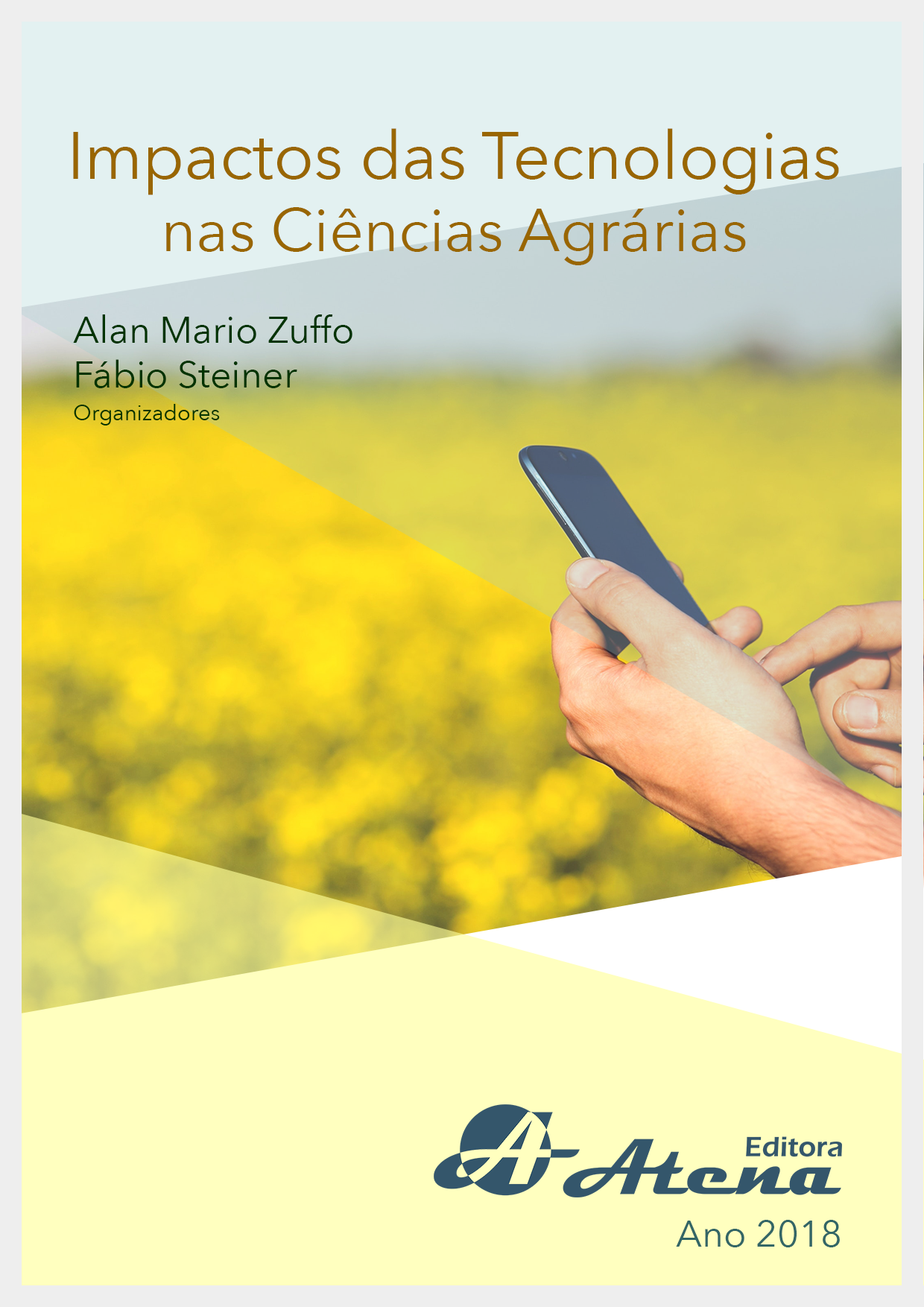
INTERAÇÕES ENTRE OS ÍONS AMÔNIO E NITRATO NO CRESCIMENTO DE MUDAS DE QUIABEIRO
O presente trabalho objetivou avaliar
o crescimento e rendimento de massa seca de
mudas de quiabeiro submetido a proporções
de nitrato e amônio. Os tratamentos seguiram a
concentração de nitrogênio sugerida pela solução
de Hoagland & Arnon (1950), que foi fornecida
em cinco proporções de N (NH4+: NO3-): 100:0;
75:25; 50:50; 25:75; 0:100. O delineamento
experimental utilizado foi inteiramente ao
acaso com cinco repetições, cada parcela
experimental foi constituída por uma planta.
As variáveis analisadas foram: altura da parte
aérea (ALT), comprimento (CR) e volume de raiz
(VR), diâmetro da haste (DIA), número de folhas
(NF), clorofila a, b, (a + b) e área foliar (AF), além
disso, determinou-se o rendimento de massa
seca da folha, caule, raiz, massa seca da parte
aérea e total (MSF, MSC, MSR, MSPA, MST), razão
de área foliar (RAF), área foliar específica (AFE)
e razão de peso foliar (RPF). As interações entre
os íons amônio e nitrato ocasionou diferenças
significativas (p<0,01) demonstrando-se, assim,
que a cultura do quiabeiro responde às diferentes
relações entre íons amônio e nitrato (NH4+:NO3-)
na solução nutritiva. As proporções 0:100; 25:75;
50:50 (NH4+: NO3-) mostraram-se favoráveis aos
parâmetros ALT, MSF, MSPA, e AFE das mudas
de quiabo quando comparadas com as mudas
que receberão nitrogênio na forma amoniacal, e
em maiores proporções do mesmo. Conclui-se,
portanto que o nitrogênio quando disponibilizado
na forma amoniacal não é a melhor opção
para a nutrição do quiabeiro em fase inicial de
crescimento.
INTERAÇÕES ENTRE OS ÍONS AMÔNIO E NITRATO NO CRESCIMENTO DE MUDAS DE QUIABEIRO
-
DOI: Atena
-
Palavras-chave: Abelmoschus esculentus (L.) Moench, Dinâmica de nutrientes, nitrogênio
-
Keywords: Abelmoschus esculentus (L.) Moench, Dynamics of nutrients, nitrogen
-
Abstract:
The experiment aimed to evaluate
the growth and yield of dry mass of seedlings of
okra Underwent ratios of nitrate and ammonium.
Treatments followed the nitrogen concentration
solution suggested by Hoagland & Arnon (1950), which was provided in five proportions
of N (NH4+: NO3-): 100:0; 75:25; 50:50; 25:75 0:100. The experimental design was
completely randomized with five replicates of each plot consisted of a plant. The variables
analyzed were: shoot height (ALT), length (CR) and root volume (RV), stem diameter
(DIA) and number of leaves (NL), chlorophyll a, b, (a + b) and leaf area (LA), in addition,
determined the yield of dry mass of leaf, stem, root dry mass of shoot and total (MSF,
MSC, MSR, MSPA, MST), leaf area ratio (LAR) , specific leaf area (SLA), leaf weight ratio
(PPR). Interactions between ammonium and nitrate did not cause significant treatment
parameters for Chlorophyll a, b and total (a + b), (MSC, MSR, MST), along with physiological
parameters (RPF) and (RAF), however were observed in ALT, NF, VR, CR, MSF, MSPA, AF and
AFE, highly significant differences (p <0.01) and demonstrating thus that the culture of okra
responded to different relations between ammonium ions and nitrate (NH4 +: NO3
-) in the
nutrient solution. The proportions 0:100; 25:75 50:50 (NH4 +: NO3
-) were favorable to ALT,
MSF, MSPA, and AFE parameters of okra seedlings compared with seedlings that receive
nitrogen in the ammonium form, and larger proportions the same. It follows therefore that
nitrogen in ammonium form as delivered is not the best option for nutrition okra in the early
growth phase.
-
Número de páginas: 13
- AGLAIR CARDOSO ALVES


